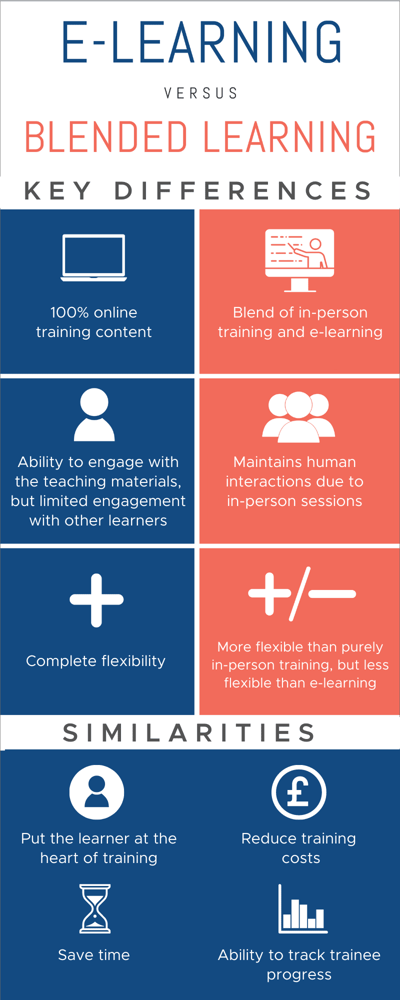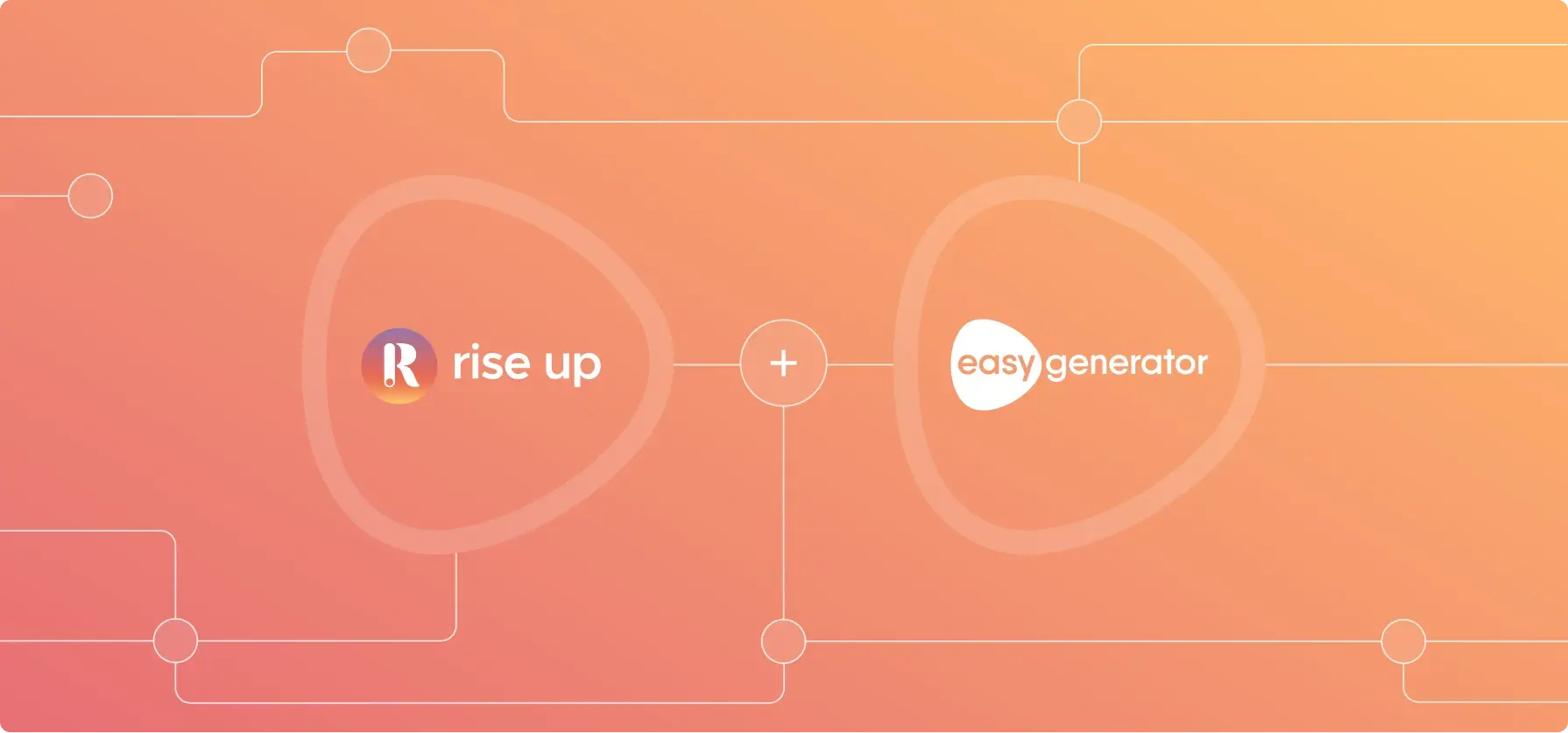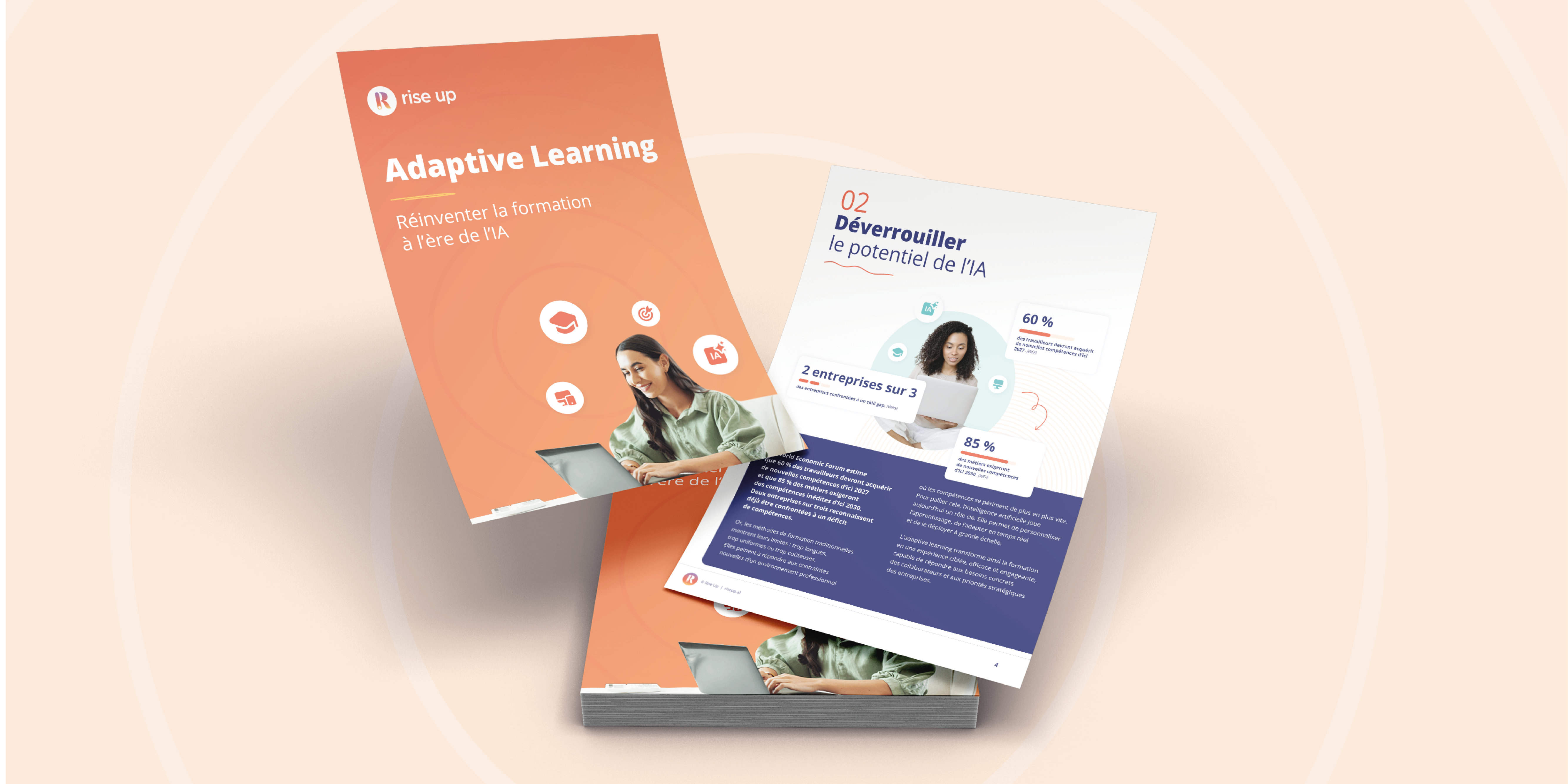Infographic: e-learning vs blended learning
7 minutes of reading | 2022-05-14
It’s clear that the pandemic and the resulting lockdowns have accelerated the digitalisation of training. In no time at all, professional training methods have been completely transformed. Delivering traditional in-person training has been made much more difficult. Companies are being forced to look towards digital learning methods, based on e-learning or blended learning.
According to a survey conducted by Edflex, 91% of employees believe that the first lockdown highlighted the need for digital training in their company. Meanwhile, 88% of them are considering self-directed training once things go back to normal.
We are therefore witnessing a professional training revolution within companies. These changes aren’t just affecting training services but employees, too. However, even if companies are increasingly moving towards adopting digital training, it’s not always clear which method is the most suitable. Should you opt for e-learning and digitalise all of your training or retain an element of in-person learning and opt for blended learning?

The definition of e-learning
Also known as “online training” or “distance learning”, e-learning is a digital form of learning. It appeared in the early noughties, when internet penetration rates began to rise dramatically. As the name suggests, e-learning takes place remotely and online via information and communication technologies (such as computers, smartphones and tablets).
An e-learning training programme is composed of several learning modules and is intended for an individual learner or group of learners. The modules themselves are broken down into stages, with a mix of different formats (text, video, audio, quizzes, etc.).
By definition, e-learning turns the traditional training model on its head. In-person training is a familiar form of learning as it represents the traditional model that we all follow from pre-school onwards. The ongoing pandemic is shaking up this format by accelerating the transition to digital training.
Nowadays, it’s not just the learner who goes to the trainer, but the trainer who comes to the learner – via an accessible online teaching course, often on an LMS.
Distance learning aims to improve professional training packages, which are often onerous to implement for companies. Whereas training used to be a real headache, what with trying to organise in-person sessions that fit in with employees’ busy schedules, e-learning is making the process much easier.
With e-learning, a training department can manage and run a training course on a learning management system. Moreover, employees can undertake the training from their desk. Another benefit is that they can do self-directed training wherever and whenever they like thanks to mobile learning, which can even be accessed offline.
However, this “miracle” solution is perhaps not all it’s cracked up to be. This is because e-learning tends to make group work much more difficult, given that trainees are not in the same physical environment. The completion rates of online learning courses are therefore not always as high as companies expect them to be.
The definition of blended learning
When training professionals first became aware that e-learning wasn’t producing the desired results, they decided to come up with new ways of delivering training. This is how blended learning (also known as hybrid learning) was born.
Blended learning combines the best of in-person and digital learning in the same training programme. It can involve a combination of e-learning modules, virtual classes, in-person training, collaborative exercises via web chats or forums, and so on.
Blended learning therefore retains the benefits of e-learning (namely that it’s time-saving, cost effective and flexible) and combines them with the benefits of in-person learning (human interactions, sharing ideas, motivation). It also makes training courses more flexible and adaptable.
By combining synchronous and asynchronous learning, blended learning can offer employees training content that is adapted to their needs. As a result, training is much more effective. For example, theory can be taught via e-learning modules, while practical exercises and simulations are well suited to in-person sessions.
E-learning vs. Blended Learning: what are the main differences?
a) The learning environment
The main difference between these two teaching methods relates to their implementation. E-learning takes place online using technology (such as a computer, smartphone or tablet). A blended learning course is followed online from anywhere, as well as in person.
In reality, the clear benefit of e-learning is that it allows learners and companies to save a considerable amount of time. Employees can undertake self-directed training from their desk and even during work hours.
With blended learning, though, training managers can adapt the learning environment to the needs of employees by offering different training methods.
For instance, let’s say that an employee working in insurance is obliged to complete 15 hours of training per year, as stipulated by the EU directive on insurance distribution. E-learning might seem like the best way of delivering this training. But what if the same employee needs training on interpersonal skills or public speaking? In this case, an in-person session with a trainer might be more suitable.
It’s clear that blended learning therefore offers a well-rounded and personalised training experience.
b) The learner experience
Are you familiar with the 70/20/10 model? If not, don’t worry – we’ll explain how it works. The model is all about how you split up formal and informal training. It proposes a split as follows:
- 10% theoretical learning
- 20% group work
- 70% practice.
This model doesn’t work so well with e-learning, which has limited scope for practical learning and doesn’t bring learners together in the same physical place. While e-learning is great for learning theory, it isn’t ideal when it comes to putting this knowledge into practice.
Blended learning is better suited to this, as it’s more immersive and interactive. It effectively provides learners with different stimuli and encourages them to apply what they have learned in practice as part of their day job. And if we go back to the method previously described, it’s worth recalling that 70% of all learning is practice-based!
c) The expense required
Both types of learning have the benefit of reducing training costs. Nonetheless, e-learning is more attractive from this perspective. This is because blended learning can involve additional logistical costs. Holding in-person training can often lead to additional expenses, such as the costs of hiring a trainer and a room, transport or accommodation expenses, investment in IT equipment, etc.
Remember that blended learning also incorporates the costs attached to e-learning, which is one of its components. From a logistical perspective, companies might therefore want to opt for an LMS platform and invest in internal resources to create impactful training content.
Infographic: blended learning vs e-learning

Hopefully, you’ll now be familiar with the main differences between e-learning and blended learning. However, we would be lying if we said that one method works better than the other. We would also be lying if we said that blended learning is superior to distance learning in every way.
In reality, when choosing a training method, it all depends on what your company and employees want to achieve.
But we’ll let you in on a little secret: the best training method is simply the one that is best suited to your training needs.
Download our expert guide: 'learning in the flow of work' to discover more about blended learning and understand how to adopt a learning culture.





